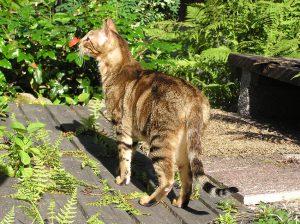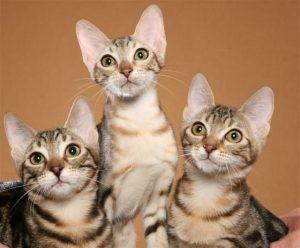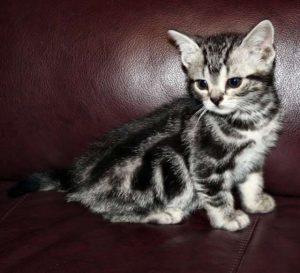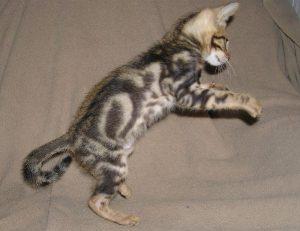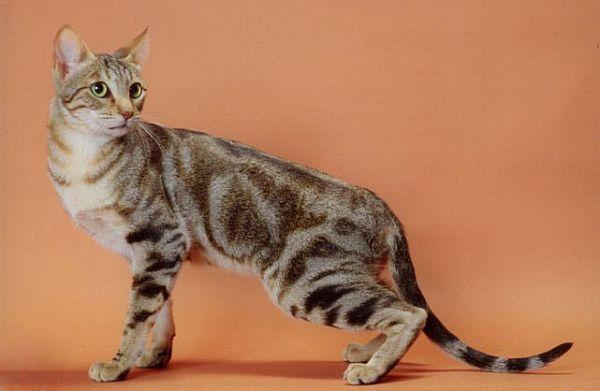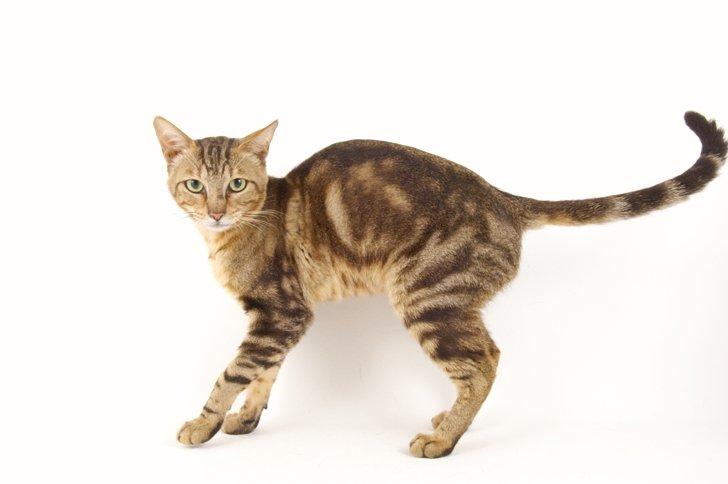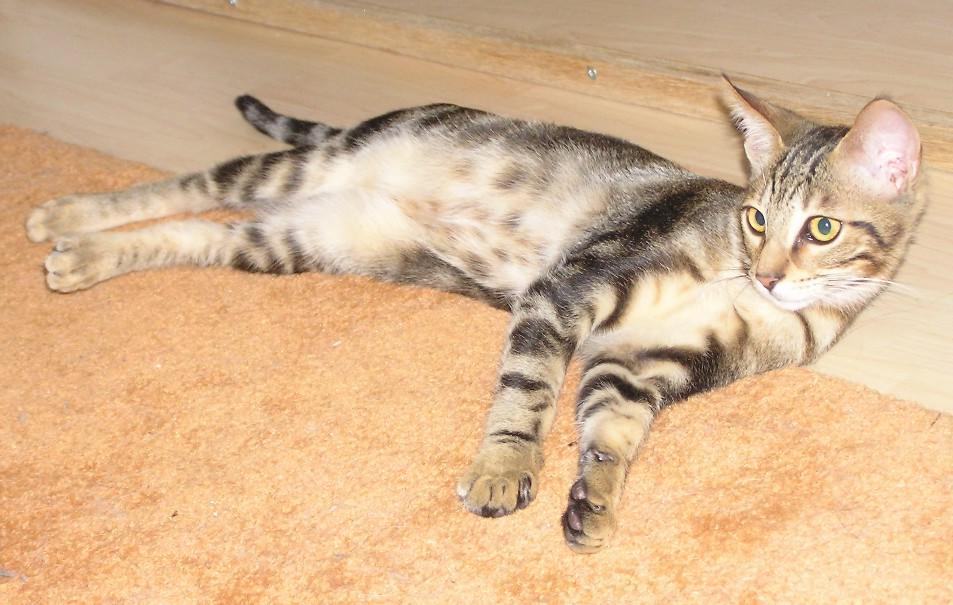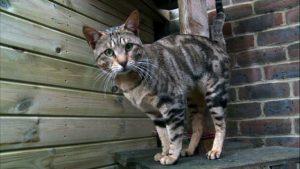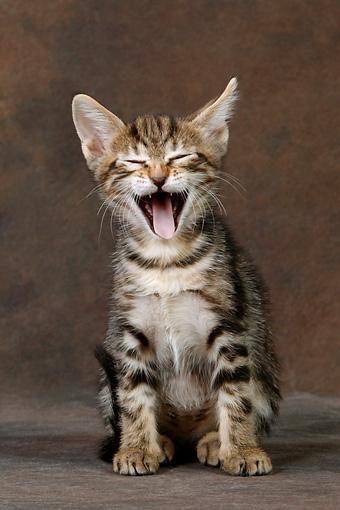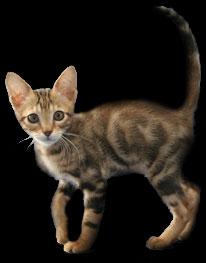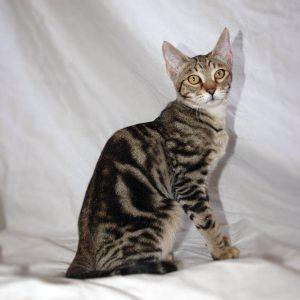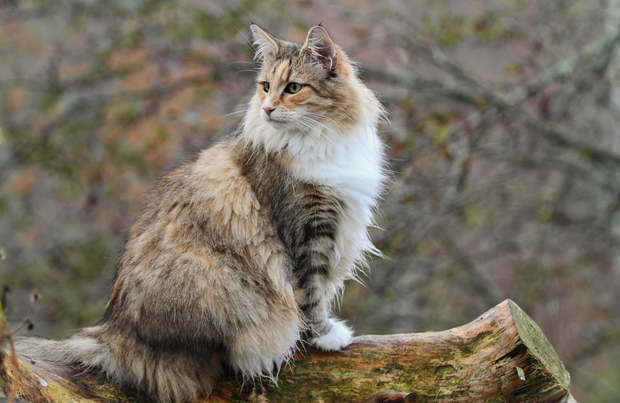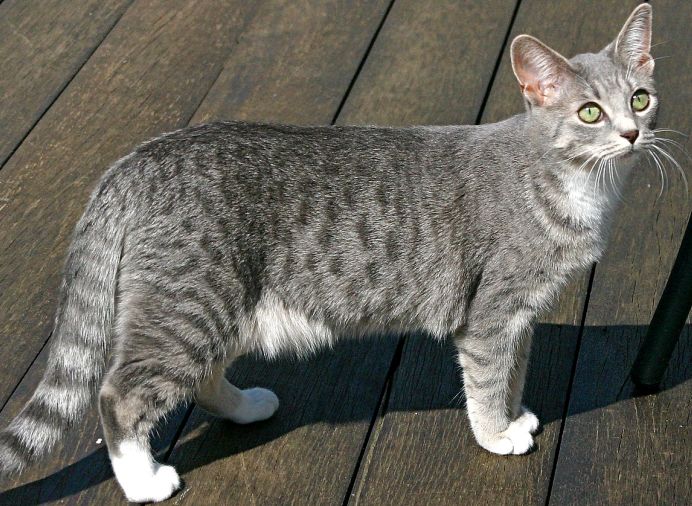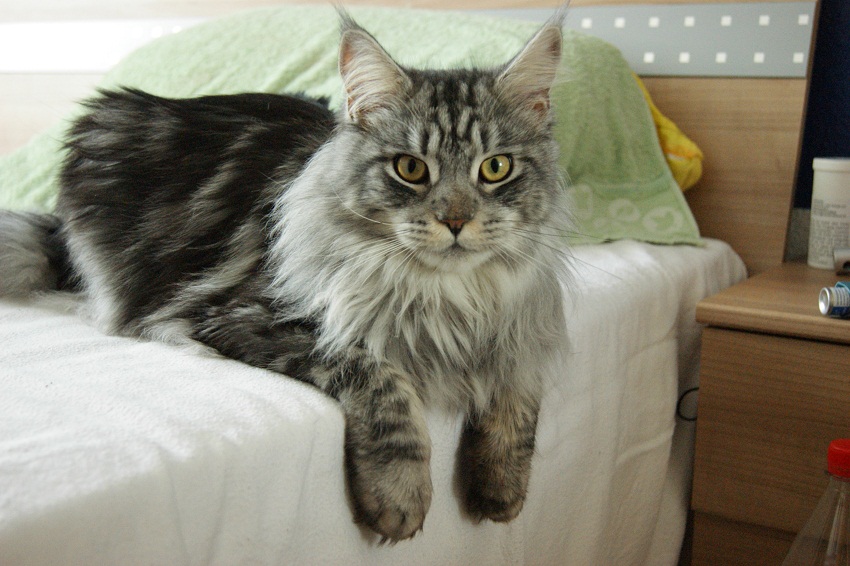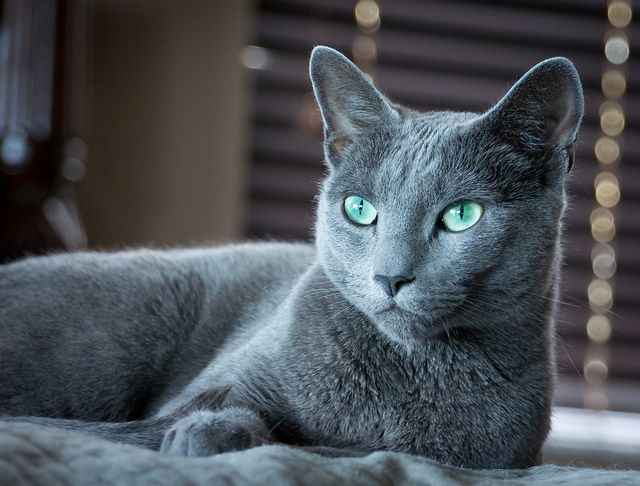Sokoke
The Sokoke is one of the few natural breeds of cat, which has evolved through acclimation to its environment without any initial human intervention. Though this medium-sized breed is a native of the Arabuko Sokoke forest in east Kenya, some of these cats have also been bred in Denmark.
It is characterized by a slim, muscular, and graceful body with higher rear legs and a long, pointed tail. It has a small head with medium-sized ears having slightly rounded tips and almond-shaped eyes with light green or amber hue.
Quick Information
Physical Appearance & Size
| Weight: | 6-10 lbs (2.7-4.5 kg) |
| Height (Size): | Medium |
Colors & Patterns
| Coat: | Short, coarse, lustrous, and tight with no undercoat; has blotched tabby coat pattern |
| Color: | Warm light brown/dark chestnut brown |
Other Characteristics
| Other Names: | Khadzonzo |
| Group of Breed: | Domestic |
| Lifespan (Life Expectancy): | 9-15 years |
| Personality Traits: | Intelligent, curious, interactive |
| Lap Cat: | No |
| Shedding: | Minimal |
| Good with children: | Yes |
| Vocalization (Noise): | Frequent |
| Hypoallergenic: | Yes |
| Country of Origin: | Kenya |
| Competitive Registration/Qualification Information: | TICA, FIFe, CCA-AFC |
History
Back in 1978, the British/Kenyan wildlife artist, and horse breeder Jeni Slater spotted two distinctive feral cats (a male and a female) in her coconut plantation. Their wild looks with unusual markings fascinated her so much that she decided to tame them, and later bred them. Since they were tamed easily, it was believed that these were not truly wild but a domestic cat that had adapted themselves to their environment.
Later they were introduced to a cat lover from Denmark and Jeni’s friend, Gloria Moeldrup. In 1984, Moeldrup imported two of these cats to Denmark, and in 1991, three more were imported. Once they were put on show at Odense, they became popular among the cat fanciers. In 1992, one of these was brought to Italy. Thus, these Sokokes created the foundation for the breed.
The Sokoke was accepted by FIFe as a “Championship Breed” in January 1994. It also received the “Preliminary New Breed” status from TICA in May 2008.
Temperament and Behavior
In spite of its wild appearance, this lovable and friendly cat is easy to manage. It is a family-oriented pet that likes to bond closely to the humans. It does not always crave for human attention or like to be cuddled in the lap but loves to follow its owner around the house showing its affection.
Since it is sociable by nature, the Sokoke mingles with other cats as well as other household pets. As an energetic and playful breed, it hates being left alone for long. It keeps itself busy by playing in quick, intense bursts. Known to be very vocal and talkative, it can continue with its conversations for hours. It can at times be aggressive, and may use its claws or teeth if threatened.
Care
The shorthaired Sokokes need little maintenance. Brushing once in every week is sufficient for their low-shedding coat. Bathe these cats with mild soap only when necessary, but be sure to accustom them to bathing early in their life. Their ears are prone to mite infections and should be frequently cleaned to keep them dirt-free. Clip their claws every 10-15 days to remove the dead layers of nails. Also, clean their teeth every week to ensure sound dental health.
So far, no hereditary or genetic health concerns have been reported. However, it is susceptible to common feline ailments, which could be overcome with vaccinations and de-worming programs. It should be immunized against the parvovirus, feline herpes virus, and feline calicivirus infections.
Gaming sessions that involve running, chasing, and jumping are required for this agile and active breed to burn off its excess energy. Toys like cat trees should be provided to satisfy its jumping and pouncing instincts.
Training
Being a clever breed, the Sokoke cat can quickly take in the instructions that are provided by its owner. Providing the kittens with obedience, behavioral, and socialization training is recommended to help them learn the essential etiquette of a family pet.
Feeding
To stay fit and healthy, these carnivores need a balanced diet with adequate quantities of protein, fat, and carbohydrates. Like most cats, they should be provided with meat. You can also give your pet high-quality canned or dry cat food, but do offer plenty of water through the day.
Interesting Facts
- The indigenous people from the Kenyan Giriama tribe described the Sokokes by using the word ‘Khadzonzo’, which means “come pretty one”.
- A new variety called the “Snow Sokokes” with cream or grayish beige hue, has been developed.
- The Sokoke does not fear water and loves swimming, unlike most other cats.

